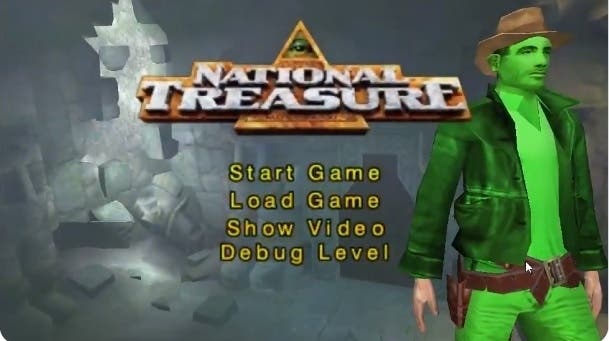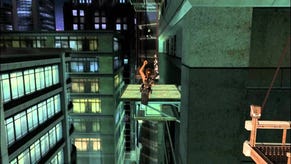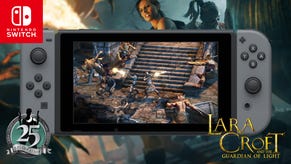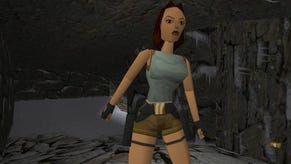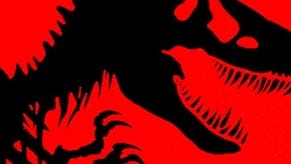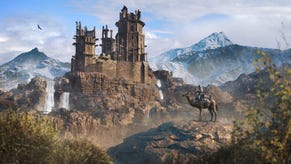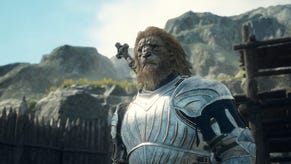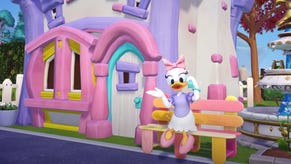Original developer of Tomb Raider tried to salvage cancelled 10th Anniversary Edition with Indiana Jones and National Treasure pitches
"He chose… poorly."
A playable build of the cancelled Tomb Raider: 10th Anniversary Edition has been made available online.
Obtained and released by Ash Kaprielov, operator of the Tomb of Ash blog, the Tomb Raider: 10th Anniversary Edition build reveals developer Core Design tried to salvage the work done by using it to create Indiana Jones and National Treasure game pitches.
Tomb Raider: 10th Anniversary Edition was meant to be the next Tomb Raider game after Crystal Dynamics' Tomb Raider: Legend, and was, as you'd expect from the title, designed to come out to coincide with Tomb Raider's 10 year anniversary in 2006. It was initially built for Sony's PSP.
Watch Kaprielov play the build in the video below:
Eurogamer revealed the nature of the game's cancellation - and the impact it had on Core Design - in the in-depth feature, 20 years on, the Tomb Raider story told by the people who were there.
In the early-2000s, as Core tried desperately to stay alive following stagnating sales of Tomb Raider, the studio moved onto a PSP game based on parkour called Free Running. The people at the studio thought they could use the engine they had created for this PSP game to make a Tomb Raider 10th Anniversary game. This would be a remake of the first Tomb Raider game, launched 10 years after its debut on Saturn, PS1 and PC.
Then Core programmer Gavin Rummery pitched the idea to then Core publisher Eidos, but was surprised to find the company lukewarm. Eidos was acquired by SCi in 2005, and Rummery found SCi more receptive to the idea of a 10th Anniversary Tomb Raider. Core got the go-ahead, and work began.
I'll dip back into my Core feature for what happened next:
"In the background, however, SCi executives wanted to cut the number of studios it held, and Core was in the firing line. Crystal Dynamics was reviving the Tomb Raider franchise with the well-received Legend. But at the time, the Californian studio had yet to prove it to the world it had what it took to make Lara Croft great again.
"'They had a lot riding on that, and it was a year late,' Rummery says. 'We were making the Tomb Raider remake, and they suddenly put forward their own demo. It was a basic demo, using a bit of the beginning of the opening scene of Legends running on PSP. I didn't think it was a big deal. I thought, come on, look how much we've got! We've nearly finished on this! I didn't foresee it as a particularly serious threat, and it didn't seem to make a lot of sense because they were going to have to outsource it.
"'But politically it made more sense for them to build it. Their trump card was, hey, we can do 10th anniversary across Xbox 360 and things like that, which we couldn't do at all because we didn't have that kind of capability.
"'So I was told, no, we've decided to go with their version, which obviously went down like a cup of cold sick at our place. And they didn't hit the 10th anniversary. So they had to call it just anniversary. It came out on the 11th anniversary. The only bit I proposed that came to fruition was the idea of doing it in the bloody first place. It was gutting.' "
Core, which had looked to Tomb Raider: 10th Anniversary Edition as revitalising its fortunes, never fully recovered from this decision, and in May 2006, Eidos-owner SCi sold off the studio to Rebellion. Core was renamed Rebellion Derby, and set to work on a sequel to Vietnam War-themed first-person shooter ShellShock, called ShellShock 2: Blood Trails. ShellShock 2 did not go well. Crystal Dynamics' Tomb Raider: Anniversary eventually came out in June 2007, published by Eidos.
What this new build reveals is Core desperately tried to salvage the work done on Tomb Raider: 10th Anniversary Edition by reskinning it for two game pitches: one an Indiana Jones game, the other a National Treasure game.
I checked in with Gavin Rummery, now CTO at Nottingham's Legendary Games, to find out more about this work. Rummery told me that after Tomb Raider: 10th Anniversary Edition was canned, Core's new owner, Rebellion, tried to pitch LucasArts on a new Indiana Jones game, so some work was done to reskin Tomb Raider: 10th Anniversary Edition for a demo. Unfortunately, LucasArts "didn't bite".
The National Treasure reskin was another failed attempt to salvage something from all the work Core had done. "It was all very speculative, so there was no real game design done for any of these demos," Rummery told me.
What might have been? Well, Core might have made an Indiana Jones game, which has a nice circle of life sound to it, given Tomb Raider was so heavily inspired by the film. Instead, what was left of Core moved on to 2009's Rogue Warrior, the ill-fated first-person shooter starring a rapping Mickey Rourke. It would go down as one of the worst video games of all time.
Rebellion Derby closed its doors in March 2010, and Core was no more.
